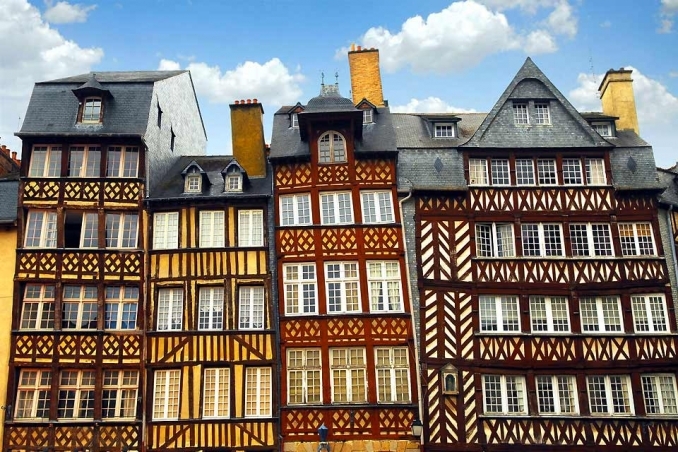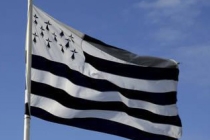Rennes - Roazhon

Rennes is the administrative capital of the Brittany, although not the historical capital which is Nantes. The eastern Armorican people of Redones founded Condate, which is an old Celtic word meaning confluence.
Rennes is at the confluence of the Ille and Vilaine rivers and capital of a territory that reached to the Bay of Mont Saint-Michel. The name of the city of Redon also reflects that of the Redones. Early in the first century BC, they adopted the Greek and Roman practice of issuing coinage. They adapted this in the form of the characteristic Celtic coin metal alloy called billion. Without inscriptions, as the Celtic practice was, this coinage featured a charioteer whose pony has a human head. Large hoards of their coins were unearthed in the "treasure of Amanlis" found in June 1835 and that of Saint-Jacques-de-la-Lande , discovered in February 1941. The Museum at Rennes contains a large collection.
Historic Centre
The Parlement de Bretagne/Breujou Breizh is possibly the most famous 17th century building in Rennes. Basilica Saint-Sauveur is also located in the historical centre. Traditional houses are situated mainly along the roads of Saint-Sauveur, Saint-Georges, de Saint-Malo, Saint-Guillaume, des Dames, du Chapitre, Vasselot, Saint-Michel, de la Psallette and around the plazas of Champ-Jacquet, des Lices, Saint-Anne and Rallier-du-Baty.
There are 16th century polychromatic wooden busts in the façade of 20, Rue du Chapitre. Throughout the historic City Centre there are many places of historic interest to see.
The Fine Arts Museum is situated on Quai Émile Zola/Émile Zola Quay, by the Vilaine River. Les Champs Libres is a building on Esplanade Charles de Gaulle designed by the architect Christian de Portzamparc that houses the Brittany Museum/Musee de Bretagne, regional library Bibliotheque de Rennes Metropole on six levels and a Science centre with a planetarium.
Transport
There are many places to explore in the surrounds of Rennes. Rennes has well developed national road, rail and air links. Local transport is based mainly on an extensive bus network (38 different lines) and a metro line that was inaugurated in March 2002. The driverless Rennes Metro (VAL) is 9.4 km (5.8 mi) in length and has 15 stations, including one designed by architect Norman Foster (La Poterie station).
The Gare de Rennes, opened in 1857, is now two hour and twenty minutes by TGV high speed train from Paris. This will be reduced to one hour and 30 minutes from 2014, after extension of the High Speed Rail Line. Rennes is also an important train station for regional transport in Bretagne.
Rennes is also served by a small airport, Rennes-St. Jacques Airport, located 7.2 kilometres (4.5 mi) from the centre to the south-west in the commune Saint-Jacques-de-la-Lande.
Links: Brittany Tourism and Rennes Tourist Office
Celtic nation:
- Brittany
Itinerary:
- Brittany east
Place type:
- Village/Town/City





